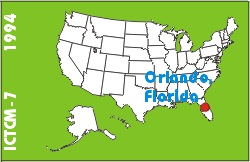
Electronic Proceedings of the Seventh Annual International Conference on Technology in Collegiate MathematicsOrlando, Florida, November 17-20, 1994Paper C005Using a Calculator to Do mathematics: Do You Want a Map or Just Directions? |
Richard E. LittleDepartment of Mathematics University of Tennessee, Knoxville 121 Ayres Hall Knoxville, TN 37996 USA Phone: (423) 974-4898 Fax: (423) 974-6576 rlittle@math.utk.edu |
| Click to access this paper: |
ABSTRACT
In mathematics perhaps the most useful role of the calculator is in easing mechanical tasks during problem solving. There are many types of problems in which a calculator is useful and most of these can be solved in more than one way. Care should be taken so that students don't adopt the view that a calculator can be used in only certain ways. It's as if the calculator were a vehicle and the solution to the problem an address. You can look at a map of the area and choose a route to take, or simply ask someone for explicit directions. The problem with directions is that they may be of little or no use when trying to reach a different address.This dichotomy of maps and directions is one of the difficulties involved in incorporating a calculator into a course. Most students would prefer to just receive directions. In the long run maps are more useful. However, it's not feasible to completely do away with directions. I will discuss these and other issues. I will also give an approach to the whole matter of maps versus directions which can help to reduce the amount of direction giving done in class.
Keyword(s): graphing calculators, pedagogy
